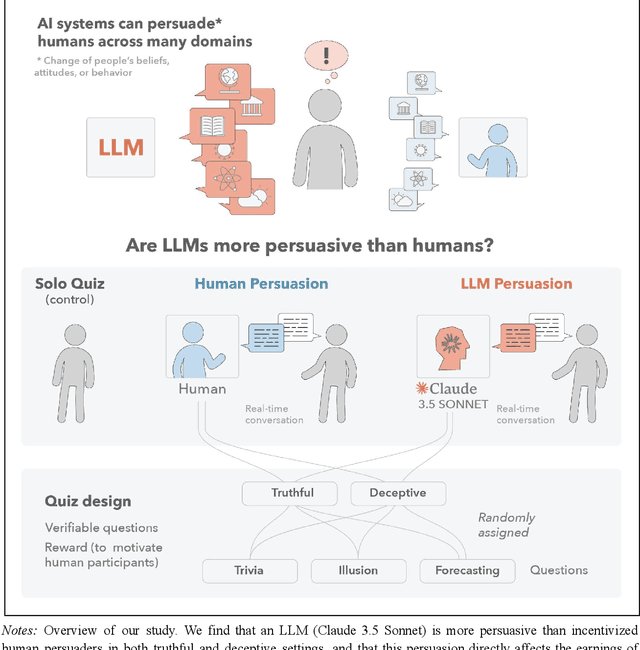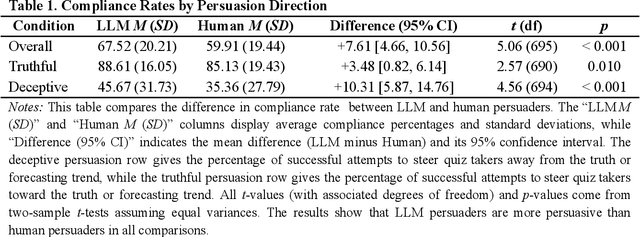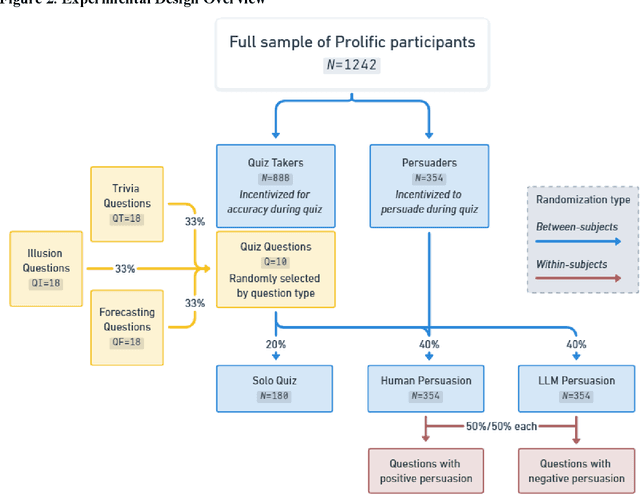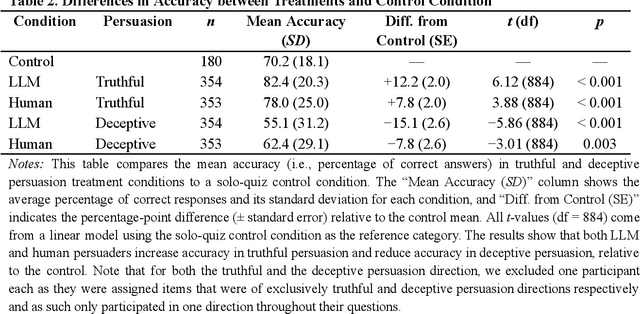Qingcheng Zeng
Good Intentions Beyond ACL: Who Does NLP for Social Good, and Where?
Oct 06, 2025Abstract:The social impact of Natural Language Processing (NLP) is increasingly important, with a rising community focus on initiatives related to NLP for Social Good (NLP4SG). Indeed, in recent years, almost 20% of all papers in the ACL Anthology address topics related to social good as defined by the UN Sustainable Development Goals (Adauto et al., 2023). In this study, we take an author- and venue-level perspective to map the landscape of NLP4SG, quantifying the proportion of work addressing social good concerns both within and beyond the ACL community, by both core ACL contributors and non-ACL authors. With this approach we discover two surprising facts about the landscape of NLP4SG. First, ACL authors are dramatically more likely to do work addressing social good concerns when publishing in venues outside of ACL. Second, the vast majority of publications using NLP techniques to address concerns of social good are done by non-ACL authors in venues outside of ACL. We discuss the implications of these findings on agenda-setting considerations for the ACL community related to NLP4SG.
DeepSieve: Information Sieving via LLM-as-a-Knowledge-Router
Jul 30, 2025Abstract:Large Language Models (LLMs) excel at many reasoning tasks but struggle with knowledge-intensive queries due to their inability to dynamically access up-to-date or domain-specific information. Retrieval-Augmented Generation (RAG) has emerged as a promising solution, enabling LLMs to ground their responses in external sources. However, existing RAG methods lack fine-grained control over both the query and source sides, often resulting in noisy retrieval and shallow reasoning. In this work, we introduce DeepSieve, an agentic RAG framework that incorporates information sieving via LLM-as-a-knowledge-router. DeepSieve decomposes complex queries into structured sub-questions and recursively routes each to the most suitable knowledge source, filtering irrelevant information through a multi-stage distillation process. Our design emphasizes modularity, transparency, and adaptability, leveraging recent advances in agentic system design. Experiments on multi-hop QA tasks across heterogeneous sources demonstrate improved reasoning depth, retrieval precision, and interpretability over conventional RAG approaches. Our codes are available at https://github.com/MinghoKwok/DeepSieve.
Seeing is Believing, but How Much? A Comprehensive Analysis of Verbalized Calibration in Vision-Language Models
May 26, 2025Abstract:Uncertainty quantification is essential for assessing the reliability and trustworthiness of modern AI systems. Among existing approaches, verbalized uncertainty, where models express their confidence through natural language, has emerged as a lightweight and interpretable solution in large language models (LLMs). However, its effectiveness in vision-language models (VLMs) remains insufficiently studied. In this work, we conduct a comprehensive evaluation of verbalized confidence in VLMs, spanning three model categories, four task domains, and three evaluation scenarios. Our results show that current VLMs often display notable miscalibration across diverse tasks and settings. Notably, visual reasoning models (i.e., thinking with images) consistently exhibit better calibration, suggesting that modality-specific reasoning is critical for reliable uncertainty estimation. To further address calibration challenges, we introduce Visual Confidence-Aware Prompting, a two-stage prompting strategy that improves confidence alignment in multimodal settings. Overall, our study highlights the inherent miscalibration in VLMs across modalities. More broadly, our findings underscore the fundamental importance of modality alignment and model faithfulness in advancing reliable multimodal systems.
The Pragmatic Mind of Machines: Tracing the Emergence of Pragmatic Competence in Large Language Models
May 24, 2025Abstract:Current large language models (LLMs) have demonstrated emerging capabilities in social intelligence tasks, including implicature resolution (Sravanthi et al. (2024)) and theory-of-mind reasoning (Shapira et al. (2024)), both of which require substantial pragmatic understanding. However, how LLMs acquire this competence throughout the training process remains poorly understood. In this work, we introduce ALTPRAG, a dataset grounded in the pragmatic concept of alternatives, designed to evaluate whether LLMs at different training stages can accurately infer nuanced speaker intentions. Each instance pairs two contextually appropriate but pragmatically distinct continuations, enabling fine-grained assessment of both pragmatic interpretation and contrastive reasoning. We systematically evaluate 22 LLMs across key training stages: pre-training, supervised fine-tuning (SFT), and preference optimization, to examine the development of pragmatic competence. Our results show that even base models exhibit notable sensitivity to pragmatic cues, which improves consistently with increases in model and data scale. Additionally, SFT and RLHF contribute further gains, particularly in cognitive-pragmatic reasoning. These findings highlight pragmatic competence as an emergent and compositional property of LLM training and offer new insights for aligning models with human communicative norms.
CARES: Comprehensive Evaluation of Safety and Adversarial Robustness in Medical LLMs
May 16, 2025Abstract:Large language models (LLMs) are increasingly deployed in medical contexts, raising critical concerns about safety, alignment, and susceptibility to adversarial manipulation. While prior benchmarks assess model refusal capabilities for harmful prompts, they often lack clinical specificity, graded harmfulness levels, and coverage of jailbreak-style attacks. We introduce CARES (Clinical Adversarial Robustness and Evaluation of Safety), a benchmark for evaluating LLM safety in healthcare. CARES includes over 18,000 prompts spanning eight medical safety principles, four harm levels, and four prompting styles: direct, indirect, obfuscated, and role-play, to simulate both malicious and benign use cases. We propose a three-way response evaluation protocol (Accept, Caution, Refuse) and a fine-grained Safety Score metric to assess model behavior. Our analysis reveals that many state-of-the-art LLMs remain vulnerable to jailbreaks that subtly rephrase harmful prompts, while also over-refusing safe but atypically phrased queries. Finally, we propose a mitigation strategy using a lightweight classifier to detect jailbreak attempts and steer models toward safer behavior via reminder-based conditioning. CARES provides a rigorous framework for testing and improving medical LLM safety under adversarial and ambiguous conditions.
Large Language Models Are More Persuasive Than Incentivized Human Persuaders
May 14, 2025



Abstract:We directly compare the persuasion capabilities of a frontier large language model (LLM; Claude Sonnet 3.5) against incentivized human persuaders in an interactive, real-time conversational quiz setting. In this preregistered, large-scale incentivized experiment, participants (quiz takers) completed an online quiz where persuaders (either humans or LLMs) attempted to persuade quiz takers toward correct or incorrect answers. We find that LLM persuaders achieved significantly higher compliance with their directional persuasion attempts than incentivized human persuaders, demonstrating superior persuasive capabilities in both truthful (toward correct answers) and deceptive (toward incorrect answers) contexts. We also find that LLM persuaders significantly increased quiz takers' accuracy, leading to higher earnings, when steering quiz takers toward correct answers, and significantly decreased their accuracy, leading to lower earnings, when steering them toward incorrect answers. Overall, our findings suggest that AI's persuasion capabilities already exceed those of humans that have real-money bonuses tied to performance. Our findings of increasingly capable AI persuaders thus underscore the urgency of emerging alignment and governance frameworks.
Do Reasoning Models Show Better Verbalized Calibration?
Apr 09, 2025Abstract:Large reasoning models (LRMs) have recently shown impressive capabilities in complex reasoning by leveraging increased test-time computation and exhibiting behaviors akin to human-like deliberation. Despite these advances, it remains an open question whether LRMs are better calibrated - particularly in their verbalized confidence - compared to instruction-tuned counterparts. In this paper, we investigate the calibration properties of LRMs trained via supervised fine-tuning distillation on long reasoning traces (henceforth SFT reasoning models) and outcome-based reinforcement learning for reasoning (henceforth RL reasoning models) across diverse domains. Our findings reveal that LRMs significantly outperform instruction-tuned models on complex reasoning tasks in both accuracy and confidence calibration. In contrast, we find surprising trends in the domain of factuality in particular. On factuality tasks, while Deepseek-R1 shows strong calibration behavior, smaller QwQ-32B shows no improvement over instruct models; moreover, SFT reasoning models display worse calibration (greater overconfidence) compared to instruct models. Our results provide evidence for a potentially critical role of reasoning-oriented RL training in improving LLMs' capacity for generating trustworthy, self-aware outputs.
MMLU-ProX: A Multilingual Benchmark for Advanced Large Language Model Evaluation
Mar 13, 2025Abstract:Traditional benchmarks struggle to evaluate increasingly sophisticated language models in multilingual and culturally diverse contexts. To address this gap, we introduce MMLU-ProX, a comprehensive multilingual benchmark covering 13 typologically diverse languages with approximately 11,829 questions per language. Building on the challenging reasoning-focused design of MMLU-Pro, our framework employs a semi-automatic translation process: translations generated by state-of-the-art large language models (LLMs) are rigorously evaluated by expert annotators to ensure conceptual accuracy, terminological consistency, and cultural relevance. We comprehensively evaluate 25 state-of-the-art LLMs using 5-shot chain-of-thought (CoT) and zero-shot prompting strategies, analyzing their performance across linguistic and cultural boundaries. Our experiments reveal consistent performance degradation from high-resource languages to lower-resource ones, with the best models achieving over 70% accuracy on English but dropping to around 40% for languages like Swahili, highlighting persistent gaps in multilingual capabilities despite recent advances. MMLU-ProX is an ongoing project; we are expanding our benchmark by incorporating additional languages and evaluating more language models to provide a more comprehensive assessment of multilingual capabilities.
SCORE: Saturated Consensus Relocalization in Semantic Line Maps
Mar 05, 2025



Abstract:This is the arxiv version for our paper submitted to IEEE/RSJ IROS 2025. We propose a scene-agnostic and light-weight visual relocalization framework that leverages semantically labeled 3D lines as a compact map representation. In our framework, the robot localizes itself by capturing a single image, extracting 2D lines, associating them with semantically similar 3D lines in the map, and solving a robust perspective-n-line problem. To address the extremely high outlier ratios~(exceeding 99.5\%) caused by one-to-many ambiguities in semantic matching, we introduce the Saturated Consensus Maximization~(Sat-CM) formulation, which enables accurate pose estimation when the classic Consensus Maximization framework fails. We further propose a fast global solver to the formulated Sat-CM problems, leveraging rigorous interval analysis results to ensure both accuracy and computational efficiency. Additionally, we develop a pipeline for constructing semantic 3D line maps using posed depth images. To validate the effectiveness of our framework, which integrates our innovations in robust estimation and practical engineering insights, we conduct extensive experiments on the ScanNet++ dataset.
ThinkBench: Dynamic Out-of-Distribution Evaluation for Robust LLM Reasoning
Feb 22, 2025Abstract:Evaluating large language models (LLMs) poses significant challenges, particularly due to issues of data contamination and the leakage of correct answers. To address these challenges, we introduce ThinkBench, a novel evaluation framework designed to evaluate LLMs' reasoning capability robustly. ThinkBench proposes a dynamic data generation method for constructing out-of-distribution (OOD) datasets and offers an OOD dataset that contains 2,912 samples drawn from reasoning tasks. ThinkBench unifies the evaluation of reasoning models and non-reasoning models. We evaluate 16 LLMs and 4 PRMs under identical experimental conditions and show that most of the LLMs' performance are far from robust and they face a certain level of data leakage. By dynamically generating OOD datasets, ThinkBench effectively provides a reliable evaluation of LLMs and reduces the impact of data contamination.
 Add to Chrome
Add to Chrome Add to Firefox
Add to Firefox Add to Edge
Add to Edge